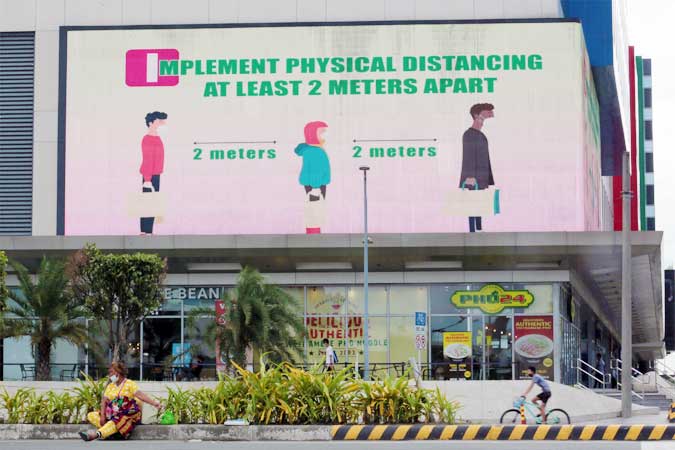THE PHILIPPINE economy’s recovery will depend on how quickly business confidence is restored, which will in turn boost private sector investments, Moody’s Investors Service said.
The ratings agency warned that the more contagious Delta variant of the coronavirus disease 2019 (COVID-19), the reimposition of strict lockdowns and the run up to the May national elections could pose downside risks to growth this year through 2022.
Prior to the crisis, private investments backed by domestic conglomerates were crucial to the Philippines’ high growth rate story, said Christian de Guzman, Moody’s senior vice-president for the Sovereign Risk Group, in a roundtable discussion.
As the coronavirus pandemic continued, capital formation was still down by 18.2% in the first quarter.
“What you’re seeing in this current context is given the persistence of COVID-19 in the Philippines, we have yet to see a restoration of that business confidence that would turn the investment picture around. This [business confidence] is something that we are looking to in terms of further evidence on whether or not investment can come back in a big way,” Mr. De Guzman said.
The economy shrank by 4.2% in the first quarter following the record 9.6% contraction in 2020.
The Philippine Statistics Authority will report second-quarter gross domestic product (GDP) data on Aug. 10.
Moody’s in July slashed its GDP growth forecast for the Philippines this year to 5.8% from 7% previously, citing its continued struggle to recover from the pandemic. This is already lower than the 6-7% full-year target by the government.
Mr. De Guzman said they are already seeing downside risks to this forecast and will revisit their estimate after the release of the second-quarter GDP and will also include the impact of the return to the most stringent form of lockdown for two weeks.
Metro Manila and nearby provinces will be under an enhanced community quarantine (ECQ) from Aug. 6-20 to help stop a possible Delta-driven surge in COVID-19 cases.
With the national elections less than a year away, Mr. De Guzman noted an election ban on public works had dampened growth in previous election years. The ban on public works starts 45 days before any regular election, or in the case of the upcoming elections — the ban is from March 25 to May 8, 2022.
He said this could affect the implementation of the infrastructure program, which the government has been using as a form of fiscal support.
For now, Moody’s expects the economy to grow by 6.5% next year.
“Unless there’s a proper preparation by the Department of Budget and Management, we may see a similar curtailment of government spending,” he said.
Government spending was the sole component in the GDP which saw growth in the first quarter at 16.1%.
Despite the country’s economic recovery lagging behind its regional peers, Mr. De Guzman noted the Philippines’ “Baa2” rating remains “well-placed” relative to similarly rated sovereigns.
“Economic outlook actually looks consistent with those of other “Baa2”-rated peers. For most of these countries, we do not expect return to 2019 real GDP levels — with the possible exception of Indonesia — until 2022. This is something that’s common to all “Baa2” countries,” he added.
Moody’s last affirmed the Philippines’ “Baa2” rating with a “stable” outlook in July 2020 along with a stable outlook which means the rating could be kept for the next 12 to 18 months.
Meanwhile, Joyce Ong, analyst at the Financial Institutions Group of Moody’s, warned that the stricter lockdown in Metro Manila may again cause banks’ asset quality to weaken.
“We think that the retail and some of the SME (small- and medium-sized enterprise) loans will continue to weigh on the Philippine banks’ loan or asset quality because these borrowers tend to have limited cash and repayment capacity to withstand prolonged disruption to business activities,” she said. — Luz Wendy T. Noble

